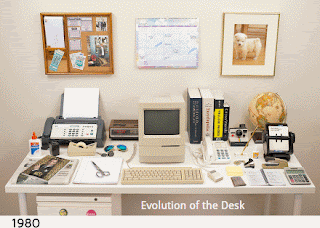When Will the CRM Evolve?
Many, many moons ago I was a brand new agent at the Western Southern Life Insurance Agency. I was given a debit book (book of customers whose premiums were collected by the agent), piles of marketing material, business cards, and a cool little desk that opened like the ones I had in elementary school. I was also given a stack of 3x5 index cards with pre-printed fields on them complete with a metal box whose dividers allowed you to file the cards according to who was to be called throughout the month. In order to be effective, Western Southern wanted me to have a plan for regular customer engagement.
Customer relations tools are not new. They have been around for decades. Almost without fail new managers stepping into their new position would put in place the CRM strategy and tools he/she used successfully as a salesperson. For automotive managers, this invariably involved some sort of desk log that everyone was responsible for filling out whenever they had an "up". The manager could then flip through the pages in meetings asking each salesperson the status of any given unsold customer.
Enter CRM software. Software brought to the industry the automation of the 3x5 index cards, sales activity sheets, and the sacrosanct desk log. Calendars within the database kept salespeople from missing important calls should they have forgotten to shuffle their cards properly. In addition to automated customer and prospect contacts, CRM software gave the automobile sales manager a whole new level of control.
Instead of simply tracking the most recent entries on the desk log, CRM software allowed managers to track the follow up activity of their sales staffs. For those for whom complete control was the source and summit of their management strategy, electronic CRM's offered the opiate known as the "lock out". Salespersons who were not consistent or timely in their follow up could be locked out of certain customer files or from working with new customers altogether until they approached their manager for electronic absolution.
Today CRM use should no longer be about control but about producing detailed, reliable data that can be used to measure the effectiveness of a business development or sales staff. Unfortunately, the many resulting automotive CRM software platforms today appear to be based on the desk log model and sort prospects and customers according to three basic archetypes: Internet, Phone, and Walk In. They measure activity by tabulating the volume of calls, emails, letters, or customer visits. While no shortage of new tech features have been added to help the competing CRMs differentiate themselves from their competitors, scant attentions seems to have be given to the restructuring of CRM software platforms to allow these types of activities to be further categorized.
Dealers are increasingly challenged by their OEM's to measure multiple key performance indicators (KPI). Any serious dealer monitors how many calls the sales or business development staff has made and measures the number of resulting appointments, but knowing the conversion ratio of all sales calls does not tell the full story. Were those outbound calls to those who submitted an information request via email? Were those returned calls to prospects who visited yet did not purchase? Were they marketing calls to follow up on equity or lease retention offers, or perhaps they were calls to owners as part of a sold follow up process?
If CRM software only considers a phone call a phone call (or an email an email, etc.), the only way to measure trending successes or struggles is to again keep paper activity logs that are manually tabulated -- the very thing software CRMs were created to replace. Dealers need reliable data to let them know that while they are strong in first outbound calls to email prospects, for example, their appointment setting prowess with unsold showroom traffic is struggling. This is the sort of data that empowers management to use targeted training in those areas that are of the greatest concern first.
On cannot blame the CRMs, by the way, for the slow evolution of detailed KPI cataloging. When the majority of your target consumers still seek reporting metrics that convert easily into "gotcha" moments used to assign blame, it is difficult them to appreciate the value of new, more specific KPI capture. To remain competitive, the CRM industry has had to develop shiny new objects like web cam integration, gauge styled graphics, and social media lookup icons to throw into the cage to keep the gorillas excited.
The tipping point is approaching, though, when a substantial number of dealers will need the ability to effectively and efficiently capture those KPIs that will allow them to most effectively analyze their conversion success. Those CRM vendors who have tested, reliable, and easy to use platforms in place to meet these demands will obviously be at a decided advantage.
 |
| So, too, must your CRM Software Evolve! |
© 2026 Created by DealerELITE.
Powered by
![]()
You need to be a member of DealerELITE.net to add comments!
Join DealerELITE.net